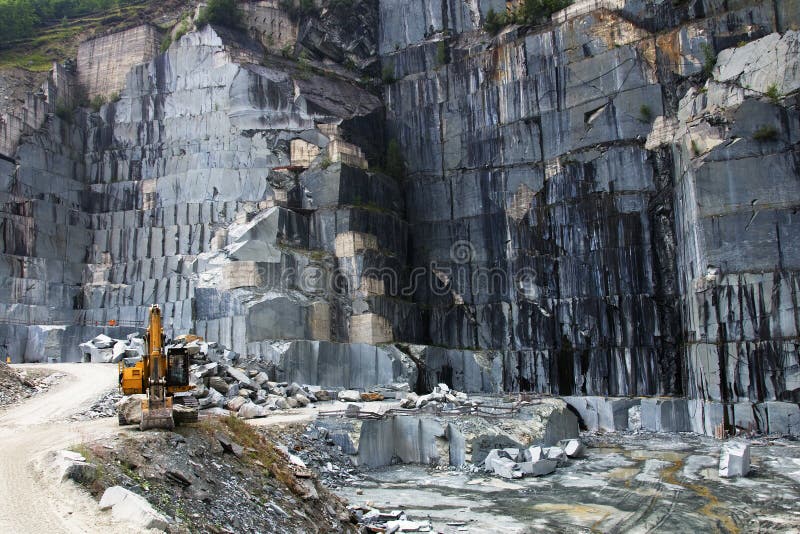Exploring Granite Quarries in South Africa Industry: From Quarry to Work of art
Exploring Granite Quarries in South Africa Industry: From Quarry to Work of art
Blog Article
Unveiling the Mysteries of Granite Quarrying: Where Stamina and Style Meet
The world of granite quarrying is a realm where the raw toughness of nature assembles with human virtuosity to create structures that stand the examination of time with an air of style. From the depths of quarries to the thorough polishing in workshops, the process of transforming granite into architectural wonders is a complex dancing of practice and advancement. As we peer right into the midsts of this old craft, we begin to reveal the hidden complexities that form the really significance of our built environment.
The Origins of Granite Quarrying
In the annals of architectural history, the beginnings of granite quarrying are shrouded in a tapestry of old workmanship and geological wonders. Going back to old Egypt and Mesopotamia, the removal of granite from quarries noted the start of a trip that would eventually lead to the creation of some of the world's most renowned structures.
Granite quarrying's roots can be traced to the knowledgeable craftsmens that identified the rock's longevity and visual allure. Via a mix of primitive devices and sheer decision, these early quarry workers unearthed granite blocks that would come to be the foundation of human beings.
As human beings advanced, so did the strategies of quarrying granite. The Romans, renowned for their design prowess, developed advanced methods for removing granite to create monoliths, temples, and roads that stood the examination of time.
The heritage of these ancient quarrying methods continues to form modern-day design, with granite staying a symbol of toughness and style in building and construction jobs around the globe. (granite quarries in south africa)
Tools of the Quarrying Profession
The development of granite quarrying techniques from old people to modern-day times highlights the essential role played by the tools of the quarrying profession in forming the sector's techniques. In ancient times, quarrying tools were primary, frequently containing blades, hammers, and wedges made from products like bronze or iron. These tools required significant workforce and time to remove granite obstructs from quarries.

Additionally, web link the introduction of pneumatic tools and high-powered machinery has considerably decreased the physical labor needed in quarrying operations, improving worker security and productivity. As the quarrying industry remains to innovate, the devices of the profession continue to be at the center of driving development and shaping the future of granite extraction.
Extracting Blocks of Granite
Utilizing accuracy equipment and progressed strategies, the removal of granite blocks from quarries has become an innovative procedure in the contemporary quarrying market. The initial step entails recognizing the place and size of the granite deposit to establish one of the most effective extraction method. As soon as an appropriate site is selected, the removal process begins with the exploration of holes for the placement of explosives. Regulated blowing up techniques are after that used to damage apart the granite into convenient sections.

Polishing and Finishing Strategies
To accomplish a flawless surface area on granite blocks, proficient artisans use a collection of precise polishing and finishing strategies. After the initial removal and shaping procedures, the granite blocks undergo a detailed polishing stage to improve their natural appeal and sturdiness. One usual method used in brightening granite is diamond abrasion, where commercial diamonds are utilized to grind and brighten the stone to a smooth coating. This process not just creates a glossy surface however also makes sure harmony in color and appearance across the granite block.
In addition to polishing, finishing techniques are used to more fine-tune the granite's appearance. By thoroughly choosing and applying these polishing and completing methods, artisans can transform raw granite obstructs right navigate to this site into elegant items that showcase both strength and beauty.

Ecological Influence and Sustainability
With the expanding focus on environmental awareness in the industry, granite quarrying techniques are increasingly looked at for their effect on all-natural sources and long-lasting sustainability. Quarrying for granite can have substantial environmental ramifications. The removal process commonly involves making use of hefty equipment, explosives, and big quantities of water, leading to environment devastation, soil erosion, and water reference air pollution. Additionally, the transportation of granite from quarries to refining centers generates carbon emissions, additionally adding to environmental destruction. granite quarries in south africa.
To minimize these impacts and ensure sustainability in granite quarrying, industry stakeholders are embracing different procedures. Carrying out innovative modern technologies to lower power intake and water use, redeeming quarried land for eco-friendly restoration, and advertising accountable sourcing methods are some methods being utilized. Moreover, accreditations such as the Woodland Stewardship Council (FSC) and the Leadership in Energy and Environmental Design (LEED) help consumers recognize eco pleasant granite products.
Final Thought
Finally, granite quarrying is a procedure that needs specialized devices and methods to extract blocks of granite and brighten them to a high level of coating. While the environmental influence of quarrying can be considerable, efforts are being made to improve sustainability methods in the industry. On the whole, granite quarrying is a delicate equilibrium between using the stamina and elegance of this all-natural rock while lessening its effect on the atmosphere.
Report this page